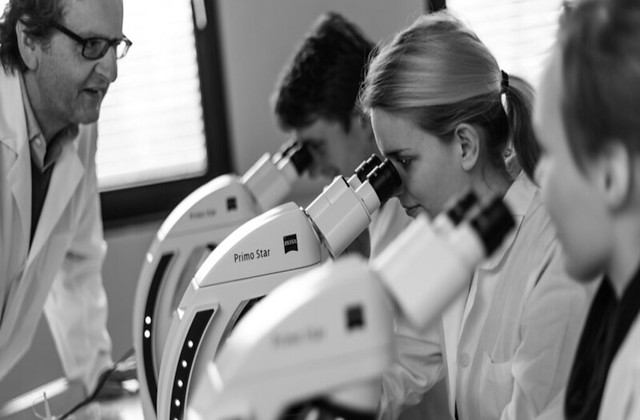How the Foldscope Can Save Lives and Impact Developing Countries
 In 2010, Manu Prakash, a professor at Stanford University, and his student, Jim Cybulski, encountered the same problem in most of their travels. The microscopes provided to them were usually broken or there was a lack of access to them altogether. That is what gave them the idea for the Foldscope. They wanted to create a very inexpensive microscope that could be portable. The duo accomplished their goal and by 2014, they had fully developed the technology called the Foldscope. Foldscope can save lives. It has an enormous amount of uses that can impact developing countries tremendously.
In 2010, Manu Prakash, a professor at Stanford University, and his student, Jim Cybulski, encountered the same problem in most of their travels. The microscopes provided to them were usually broken or there was a lack of access to them altogether. That is what gave them the idea for the Foldscope. They wanted to create a very inexpensive microscope that could be portable. The duo accomplished their goal and by 2014, they had fully developed the technology called the Foldscope. Foldscope can save lives. It has an enormous amount of uses that can impact developing countries tremendously.
The Foldscope is a portable microscope. Prakash and Cybulski made it so that the Foldscope came as a single piece of thick paper. The user assembles it by snapping out the individual pieces from the paper. It takes fewer than ten minutes to put together. The microscope is fully functional and weighs a total of about nine grams. Because of the inexpensive parts used, the Foldscope costs less than a dollar to produce. Although the Foldscope is very inexpensive, it doesn’t mean it isn’t effective; the Foldscope can magnify up to 2,000 times.
Foldscope Fighting Diseases
Because of the cost and accessibility of the Foldscope, each doctor could potentially have their own personal microscope on them. This is largely important because one of the deadliest diseases in the world, Malaria, can only be detected through a microscope. Without the proper equipment, Malaria goes undetected and kills about one million people per year. It affects at least 300 million people in the world today with 90 percent of them being in Sub-Saharan Africa. Having access to a microscope will impact developing countries greatly as detection will decrease the number of deaths per year. Thousands of children will be saved since Malaria affects them the most. In 2016, malaria took the lives of 300,00 children.
Noma is another disease that has a high chance of affecting children in developing countries. This is a disease that can be prevented if dentists have access to the proper tools and the public has access to dentists. Unfortunately, this isn’t the case in these developing countries. The ratio of dentists to the general population in Africa is 1 to 150,000. When there are dentists available, they often don’t have the necessary tools. By providing Foldscopes to dentists in developing countries, dentists can easily identify diseases like Noma that affect 140,000 people per year. This could prevent the deaths of as many as 80 percent of those affected.
Preventing Hearing Loss
In surgery, microscopes are crucial for performing effective operations. This is especially true in surgeries involving the ear. Hearing loss is a prevalent problem in developing nations. The most common cause of hearing loss in these countries is chronic otitis media. Chronic otitis media can include a hole in the eardrum or an infection that won’t heal. It can also include other infections that can lead to the erosion of the walls in the ear. These holes can cause serious side effects like facial nerve paralysis and meningitis.
Chronic otitis media affects at least 65 to 330 million people per year with 90 percent of them occurring in developing nations. Fortunately, this can be prevented through surgery. However, because there aren’t many ENT specialists and most don’t have access to the tools they need, it has become a widespread problem in developing nations. The availability of the Foldscope can save lives and impact developing countries tremendously because they make surgeries are more possible. This could help bring down the most prevalent cause of hearing loss in developing countries.
Increasing Scientific Breakthroughs
Research in developing countries has been improving for years now. Unfortunately, many governments generally don’t have the funds to provide research facilities with the equipment needed. Equipment like basic mass spectrometers can cost between $100,000 and $200,000. This is why it’s important to cut down costs at every opportunity.
Since 65 percent of Africans rely on agriculture to live, agricultural research is some of the most important research being done in developing countries. It’s important that scientists get the equipment they need. Because the Foldscope is a portable microscope, it’s perfect to take out into the field to study crops. Although the Foldscope was designed for portable applications, it has a wide range of potential uses that can impact developing countries greatly.
The microscope detection of malaria in its early stages could save thousands of children’s lives. It could also help dentists in developing countries detect Noma. The microscope can also help ENT specialists prevent hearing loss at an early age, which can help open up opportunities they wouldn’t have. Lastly, the Foldscope is beneficial to scientists in developing countries as it gives them an easy way to study out in the field. All of these potential uses for the Foldscope can save lives and even help the economies of developing countries. Having a healthier population will provide a boost to their economies.
– Ian Scott
Photo: Flickr
